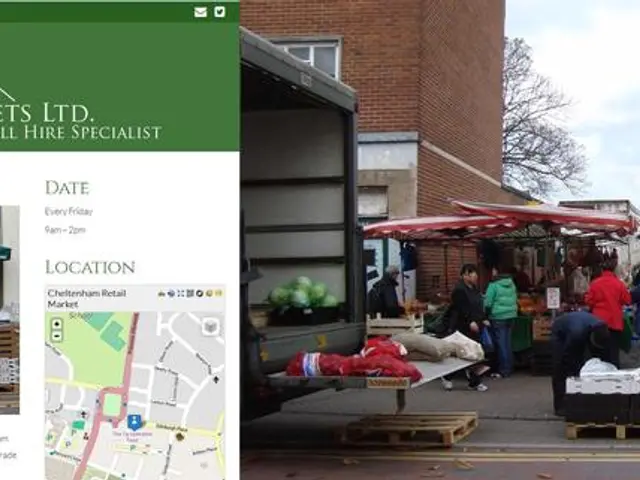Trump's decision to slash food aid led to persistent pleas from humanitarian workers to preserve food supplies from ruin over a series of weeks.
The US government is facing a critical situation regarding emergency food rations stored in a warehouse in Dubai, with approximately 1,100 metric tons of food aid nearing expiry due to delays in distribution caused by the Trump administration's aid freeze.
The aid freeze, which disrupted global humanitarian operations and led to the firing of thousands of USAID employees and contractors, has put a substantial portion of the food stock at risk of expiring unused. This potential loss of valuable aid resources, valued at $793,000 for the portion that expired, has raised concerns about the effective management of aid supplies.
The State Department decided to destroy approximately 500 metric tons of expired biscuits due to safety concerns, as expired food products cannot be legally distributed to recipients. The destruction of the expired biscuits will cost the U.S. government an additional $100,000.
However, following intense lobbying by aid workers, 622 metric tons of biscuits were saved and are now destined for Syria, Bangladesh, and Myanmar. This was achieved through a deal that highlighted the need to avoid wasting tax dollars.
Alexandra Rutishauser-Perera, the director of nutrition at Action Against Hunger UK, stated that the destruction of emergency food underscores the unintended consequences of funding cuts. She emphasized that the loss of these rations could have fed around 27,000 people for a month.
The UN World Food Program states that 319 million people are facing acute levels of food insecurity worldwide. Of those, 1.9 million people are gripped by catastrophic hunger and on the brink of famine, primarily in Gaza and Sudan.
Despite the destruction, the State Department emphasized that the lost rations represented less than 1% of the total US food aid distributed annually. Plans are in place to replace the destroyed stockpile.
US Secretary of State Marco Rubio stated that no food aid would be wasted. The saved food rations, valued at nearly $1 million, will be distributed by the World Food Program (WFP) to those in need.
The originally intended recipients of the saved food rations were USAID partners in Afghanistan and Pakistan. The agreement to transfer the 622 metric tons of food rations to the WFP for distribution was approved in June after weeks of waiting. It took until early July to begin sending the stocks due to the disruption of supply chains.
The food rations are fortified wheat biscuits, typically deployed in crisis conditions where people lack cooking facilities. The destroyed food rations, worth $793,000, will be turned into landfill or incinerated in the United Arab Emirates.
The Trump administration's aid freeze has created a critical situation for emergency food rations in Dubai, leading to the destruction of valuable resources while emphasizing the challenges in managing aid supplies effectively.
- The aid freeze initiated by the Trump administration has raised concerns about the effective management of aid supplies, as the delay in distribution led to the expiry of approximately 1,100 metric tons of food aid, worth $793,000.
- The Trump administration's aid freeze disrupted global humanitarian operations, causing the destruction of approximately 500 metric tons of expired food aid, valued at $179,300, and resulting in an additional cost of $100,000 for their disposal.
- The Trump administration's aid freeze, which led to delays in distribution and the subsequent destruction of food aid, has highlighted the need for boundaries in funding cuts, as the loss of emergency food resources could have fed around 27,000 people for a month.







